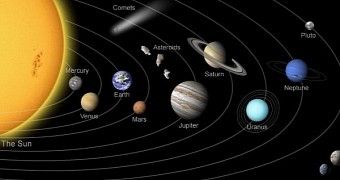Apart from the planets we are all too familiar with, our Solar System is home to a heck lot - we're talking tens of thousands - of celestial bodies whose orbits are, to put it bluntly, chaotic and borderline insane.
These celestial bodies, described as minor planets, are known to astronomers as centaurs. Among them is Chirion, discovered in 1977 and estimated to have a diameter of about 233 kilometers (145 miles).
Despite being freakishly small when compared to the proper planets that comprise the Solar System, it looks like Chirion has a ring system similar to the one encompassing Saturn's full figure.
Or so argue a team of Massachussets Institute of Technology scientists in a new report. If the researchers are right, this would mean that, contrary to previous assumptions, there is lots of commotion happening on and around centaurs, Phys Org explains.
The researchers base their claims on data obtained back in November 2011, when Chiron passed in front of a star and temporarily blocked part of the light originating from it. At that time, several odd shadows were observed.
The Massachussets Institute of Technology scientists believe that these shadows were created not by the centaur itself, but by a system of rings encircling it. If the system really exists, chances are it comprises gas and dust coughed out by the minor planet.
One other possibility is that this ring system is made up of the remains of another celestial body that got destroyed close enough to Chiron for the resulting debris to be captured by the minor planet's gravitational pull.
It is believed that Chiron has at least two rings measuring 3 and 7 kilometers (about 2 and 4 miles) across, respectively. At its furthest point, the ring system sits 300 kilometers (186 miles) from the centaur's center.

 14 DAY TRIAL //
14 DAY TRIAL //